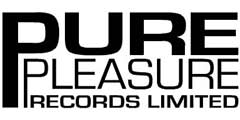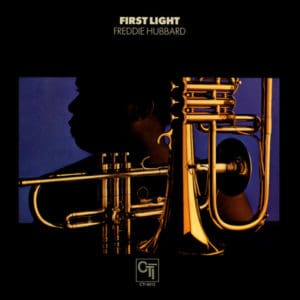Marketplace
2018 Pure Pleasure Records PRESSING
- Catalog Number CTI 6013
- Release Year 2018
- Vinyl Mastering Engineer Ray Staff
- Pressing Weight 180g
- Jacket Style Gatefold
- 100% Analog Mastering Yes
When listening to this album I think of this band or music:
Woody Shaw and Freddie Hubbard share many similarities, best appreciated on their joint Blue Note album, Double Take.
I would listen to this album while:
Appreciating my own good fortune and health, and how Hubbard overcame his lip injury and health problems later in life. At a fundamental level, First Light is very inspirational and life-affirming music.
Music from this album would be a great soundtrack to this movie:
Hubbard’s version of the Leonard Bernstein tune “Lonely Town” would be a perfect accompaniment to the scene where Steve McQueen tears up the beach in a dune buggy in The Thomas Crown Affair.
If you are an aficionado of jazz LPs, your collection likely includes a healthy dose of Freddie Hubbard vinyl. For starters, Hubbard has stuck around longer than many other great trumpet players and amassed a healthy stockpile of recordings. Others were not so lucky. Clifford Brown died in an auto accident at the age of 25. Lee Morgan was shot to death at 33. Fats Navarro expired at 26. Chet Baker held on to the ripe old age of 58, when he fell out of a window.
Like Miles Davis, Dizzy Gillespie, and Louis Armstrong, Hubbard lived long enough to qualify for Social Security benefits. Akin to his fellow senior citizens, he reached the highest levels of achievement. Beginning in 1960, Hubbard started releasing a series of albums as a leader for Blue Note. He also constantly recorded as a sideman, guesting on sets led by John Coltrane, Eric Dolphy, Ornette Coleman, Herbie Hancock, and Wayne Shorter. And in the 1970s, when jazz was trying to reinvent itself, he made three of his finest LPs for Creed Taylor’s CTI label.
Hubbard fielded an all-star lineup for First Light, with personnel extending to Jack DeJohnette on drums, Ron Carter on bass, Richard Wyands on piano, George Benson on guitar, Airto Moreira on percussion, and Hubert Laws on flute—in addition to a backing orchestra of horns and strings. The seven compositions range from material by William Walton to Paul McCartney with songs by Hubbard, Henry Mancini, and Bernstein in between. The third of Hubbards’s CTI outings, the odd mix of compositions succeeds as a Grammy-winning soul masterpiece that never sounds overly funky. And unlike many CTI productions, it is not overproduced. Arranged by Don Sebesky, the horn section also serves to strengthen Hubbard’s work rather then drench it in treacle.
Recorded in September of 1971 at Rudy Van Gelder’s studio, First Light remains among the best-sounding albums in the CTI catalog—and one of Van Gelder’s better-sounding 70s efforts. Each of the three available vinyl options present trade-offs. Besides the original and this Pure Pleasure reissue, you can get also find a still-in-print ORG Music edition.
There are no huge differences in sonics between the pressings. The Pure Pleasure LP, probably mastered from a safety copy of the master tape, sounds a bit drier than the Bernie Grundman-mastered ORG version and the original, both of which present a very scant amount of more air around the instruments. Packaging tips the scales. Original CTI pressings tend to have a laminate that does not stand up to shelf wear. And if your original was pressed after 1973, it likely exhibits oil-embargo vinyl. ORG’s edition skimps on packaging, foregoing the original foldout design by instead printing the inside cover notes and artwork on the record sleeve. Pure Pleasure delivers the original cover design and a perfectly quiet Pallas pressing.
First Light


 4.5
4.5